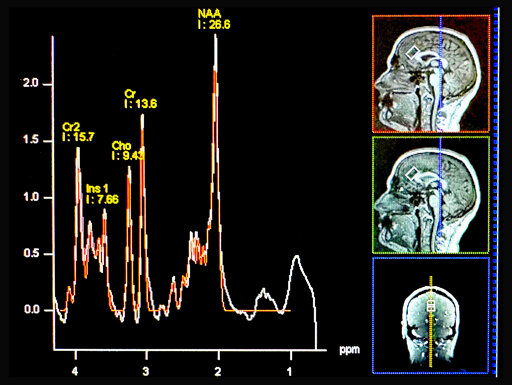- 480 Posts
- 1.28K Comments

 12·22 hours ago
12·22 hours ago

 5·1 day ago
5·1 day agoI wouldn’t mind so much if they were giving their own arms and legs, but they seem to be giving ours.

 7·2 days ago
7·2 days agoThat’s been the thinking for the last couple of decades at least. But it can’t continue if people can’t afford new hardware.

 191·2 days ago
191·2 days agoTheir agenda sounds good but apparently they’ve acted a bit shadily in various ways.
https://drewdevault.com/2025/10/22/2025-10-22-Whats-up-with-FUTO.html

 169·2 days ago
169·2 days agoIf there’s any silver lining to this, perhaps we can get a renewed interest in efficient open-source software designed to work well on older hardware, and less e-waste.

 9·3 days ago
9·3 days agoThey’re still preparing, gathering names for the day when they have enough force:

 5·3 days ago
5·3 days agoI have no idea how he manages to do so many things so well. Some people just seem to be built like that.

 19·3 days ago
19·3 days agoAnother case of AI = Actually Indians.
Benn Jordan’s video on Flock is worth a watch.

 11·4 days ago
11·4 days agoEven more efficient: humans do the specs and the implementation. AI has nothing to contribute to specs, and is worse at implementation than an experienced human. The process you describe, with current AIs, offers no advantages.
AI can write boilerplate code and implement simple small-scale features when given very clear and specific requests, sometimes. It’s basically an assistant to type out stuff you know exactly how to do and review. It can also make suggestions, which are sometimes informative and often wrong.
If the AI were a member of my team it would be that dodgy developer whose work you never trust without everyone else spending a lot of time holding their hand, to the point where you wish you had just done it yourself.

 5·4 days ago
5·4 days agoThe hard thing about debugging other people’s code is understanding what they’re trying to do. Once you’ve figured that out it’s just like debugging your own code. But not all developers stick to good patterns, good conventions or good documentation, and that’s when you can spend a long time figuring out their intention. Until you’ve got that, you don’t know what’s a bug.

 404·7 days ago
404·7 days agoCapitalism is destroying the world. We need to rise up against that. The AI bullshit is just one manifestation of the whole world being geared to serve capital and the handful of people that control it.
Isn’t that like inviting all your friends and family onto your LAN? That would seem to have its own security risks.

 22·16 days ago
22·16 days agoThe NYT has evidently decided its task is to undermine Mamdani steadily and gradually through the spin it puts on daily reports.
Lol, I’ve corrected that now. An OCR Freudian slip.
Just for convenience (since it’s hard to read the screenshot on a phone), here’s the text:
GrapheneOS is being heavily targeted by the French state because we provide highly secure devices and won’t include backdoors for law enforcement access. They’re conflating us with companies selling closed source products using portions of our code. Both French state media and corporate media are publishing many stories attacking the GrapheneOS project based on false and unsubstantiated claims from French law enforcement. They’ve made a clear threat to seize our servers and arrest our developers if we do not cooperate by adding backdoors. Due to this, we’re leaving France and leaving French service providers including OVH. We need substantial help from the community to push back against this across platforms. People malicious towards us are also using it as an opportunity to spread libel/harassment content targeting our team, raid our chat rooms and much more. /e/ and iodéOS are both based in France, and are both actively attacking GrapheneOS. /e/ receives substantial government funding. Both are extremely non-private and secure which is why France is targeting us while those get government funding. We need a lot more help than usual and we’re sending our the first ever notification to everyone on the server because this is a particularly bad situation. If people help us, it will enable us to focus more on development again including releasing experimental Pixel 10 releases very soon.

 2·17 days ago
2·17 days agoIt pays badly and it can be disorganized, but no one I work with is that bad of a person, what we do is more useful to real people than a lot of tech companies and there’s no nasty politics to speak of. So yes, it has its upsides.

 2·18 days ago
2·18 days agoI’ve become quite good at paying just enough attention that I can jump in if anything important comes up, and meanwhile continuing to work. I don’t turn my camera on.

 10·18 days ago
10·18 days agoWe stick to that format with minor variations:
- Recap of the morning’s school run and dog walks
- Update on everyone’s pets’ health
- Update on peoples’ kids’ behaviour
- Update on team members’ health and their families
- Miscellaneous gripes
- All the sports: what happened, what people think will happen, and details of particular players
- Sports statistics in depth
- Mutual accusations of breaking things
- Defence against said accusations
- Gripes about boss’s emails
- Long, in-depth accounts from two team members of their last day’s work, minute by minute, with digressions into big-picture frustrations and grumbles about management, customers, etc.
- Recounting of the history of these issues over the last 15 years or so.
- Each person tells us that they’re working on the thing the kanban board says they’re working on, and that it will take them as long as it says on the board.
- Holiday plans or accounts of past holidays
- Goodbye
- One guy jumps in with a 15-minute anecdote about taking his dog to the vet
- Goodbye
- Any further anecdotes about things people’s dogs ate, etc.
- Goodbye.
Its supposed to take 10-15 minutes but it takes up to an hour, sometimes more. I usually tune in late and sometimes pretend I lost my internet connection halfway through.


























That doesn’t sound wise.